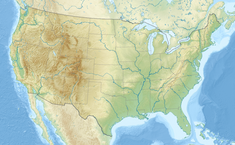 Sabine Pass Battleground State Historic Site | |
| Location | 6100 Dowling Rd., Port Arthur, Texas |
| Coordinates | 29°43′43″N93°52′30″W / 29.72861°N 93.87500°W |
| Governing body | Texas Historical Commission |
| Website | Sabine Pass Battleground State Historic Site |
Sabine Pass Battleground State Historic Site is located in Jefferson County, Texas, where the Sabine River enters the Gulf of Mexico. The site is the location of a significant Civil War battle.
Contents
In September 1863, members of the Davis Guard—led by Confederate Lt. Richard "Dick" Dowling—held off a Union attack at Sabine Pass, a key port for Confederate shipments of supplies. In a battle lasting less than an hour, Dowling and his men destroyed two gunboats, captured nearly 350 prisoners, and prevented Union forces from penetrating the Texas interior. [1] [2]
Today, the site is operated as a historic site by the Texas Historical Commission. Features include the 1936 statue honoring Dowling's feats, a monument dedicated to the Union casualties, outdoor educational exhibits, and a scale model of the Civil War-era fort and battle. [3]

